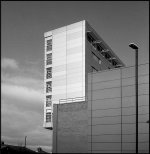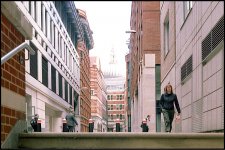Hi all
Just a general thread to see what type of lens everyone uses to get photos of buildings, streets, towns, property, architecture etc. I work as a property photographer and use mainly a wide angle Sigma art lens, however I will occasionally take photos of towns, streets, landmarks, rivers and lifestyle type shots to compliment the properties I photograph. I also have use of a Canon 50mm prime lens which I typically use for these type of shots as I find the wide angle to produce quite flat results if that makes sense, however it got me thinking...is the general rule of thumb to use wide angles for architecture photography, do many prefer something different. Most architecture photos appear to be taken on wide angles but I may be wrong.
Of course photos of interiors/rooms would usually always require a wide angle but do exteriors, towns and streets have a particular lens that works best. Personally I like using a prime lens as it produces a good depth of field that really helps certain points of interest stand out. So really just interested to hear what everyone else uses and what array of lenses you typically carry.
Just a general thread to see what type of lens everyone uses to get photos of buildings, streets, towns, property, architecture etc. I work as a property photographer and use mainly a wide angle Sigma art lens, however I will occasionally take photos of towns, streets, landmarks, rivers and lifestyle type shots to compliment the properties I photograph. I also have use of a Canon 50mm prime lens which I typically use for these type of shots as I find the wide angle to produce quite flat results if that makes sense, however it got me thinking...is the general rule of thumb to use wide angles for architecture photography, do many prefer something different. Most architecture photos appear to be taken on wide angles but I may be wrong.
Of course photos of interiors/rooms would usually always require a wide angle but do exteriors, towns and streets have a particular lens that works best. Personally I like using a prime lens as it produces a good depth of field that really helps certain points of interest stand out. So really just interested to hear what everyone else uses and what array of lenses you typically carry.






